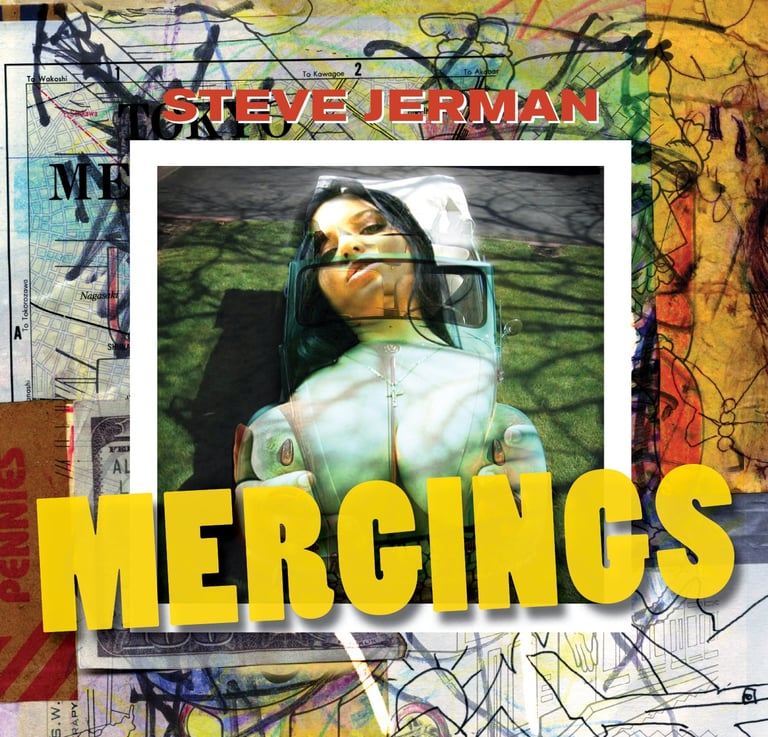Mergings
MergingsTM is the name of a digital art technique/art series created by Graphic Designer Steven R. Jerman around the year 2000. This digital art is assembled in a photo editing program from which the final digital image is created.
The art is constructed with disparate images on separate layers. Then various photographic calculations of the two layers create a new visual that is the result of the combined elements. The power of the imagery relies on combining, This is both the unusual visual effects but also the intellectual stimulation, difference, and simulates of what each image stands for.
Jerman created the Merging technique after learning the Photoshop image editing software. Though he had done graphic design on the desktop computer since 1986, it was not until the end of the century that began to use Photoshop. A childhood friend who had become an expert did projects for him when needed.
The artistic technique started as an exercise on how the various filters and settings in the program would affect the photos. When working on a piece several, and sometimes all the settings - photographic manipulations would be tested. This was a fun and visually rewarding process to see what each one might do with the images found.
The individual layer images were generally found on the internet through an image search. How different images of a couple of subjects might be used together was conceptualized. The images chosen to be downloaded and used depending on the concept and if the idea of likeness or difference would be portrayed.
Because of the random and immediately found nature of the component photos the size of the finished art would vary. Pixel dimensions of the photos usually determine how big the art could be displayed. However just one larger photo would tend to make the output larger.
The ideas for the Mergings came from a creative spark that could be based on any notion but often was an idea from current events. From the moment of the thought of combining A + B (and possibly C) an exhilarating race would take place. Images would be searched in Google images, these would be evaluated as to how they would work with other images. Large photos, those with the most pixels would be favored because they would look better larger.
The Photoshop file that creates the art could make a near endless number of options based on just the way two layers could affect each other, given the number of filter styles and the adjustable percentage of each used. Most pieces were created in 15 minutes or less so once the images came together and the filters were tested out a winning look would be decided on, eventhough many of them might be interesting.
Once he felt the exercise was solved a final proof would be saved, becoming the finished piece, created at a certain time at a certain size. Sometimes the layers of the document were flattened into the final image, making it impossible to try to reproduce it again. The final file is unique in the image and time it was finalized.


